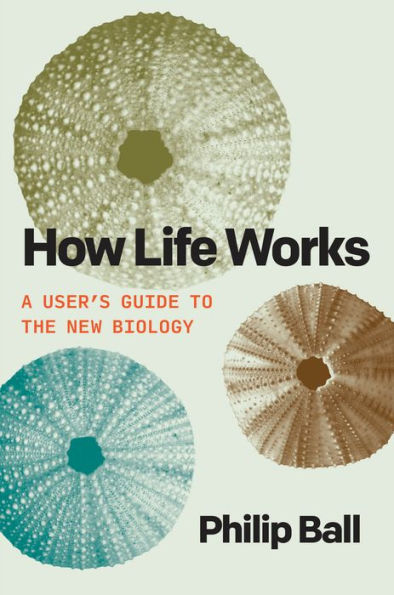Home
How Life Works: A User's Guide to the New Biology
Loading Inventory...
Barnes and Noble
How Life Works: A User's Guide to the New Biology
Current price: $29.00


Barnes and Noble
How Life Works: A User's Guide to the New Biology
Current price: $29.00
Loading Inventory...
Size: Hardcover
*Product Information may vary - to confirm product availability, pricing, and additional information please contact Barnes and Noble
“Bold and intriguing.”
Wall Street Journal
• “Penetrating. . . . Provocative and profound.”
Publishers Weekly
(starred review) • “Offers plenty of food for thought.”
Kirkus Reviews
(starred review)
“Ball’s marvelous book is both wide-ranging and deep. . . . I could not put it down.”Siddhartha Mukherjee, author of
The Song of the Cell
and the Pulitzer Prize-winning
The Emperor of All Maladies
A new, cutting-edge vision of biology that revises our understanding of what life itself is, how to enhance it, and what possibilities it offers.
Biology is undergoing a quiet but profound transformation. Several aspects of the standard picture of how life worksthe idea of the genome as a blueprint, of genes as instructions for building an organism, of proteins as precisely tailored molecular machines, of cells as entities with fixed identities, and morehave been exposed as incomplete, misleading, or wrong.
In
How Life Works
, Philip Ball explores the new biology, revealing life to be a far richer, more ingenious affair than we had guessed. Ball explains that there is no unique place to look for an answer to this question: life is a system of many levelsgenes, proteins, cells, tissues, and body modules such as the immune system and the nervous systemeach with its own rules and principles.
explains how these levels operate, interface, and work together (most of the time).
With this knowledge come new possibilities. Today we can redesign and reconfigure living systems, tissues, and organisms. We can reprogram cells, for instance, to carry out new tasks and grow into structures not seen in the natural world. As we discover the conditions that dictate the forms into which cells organize themselves, our ability to guide and select the outcomes becomes ever more extraordinary. Some researchers believe that ultimately we will be able to regenerate limbs and organs, and perhaps even create new life forms that evolution has never imagined.
Incorporating the latest research and insights,
is a sweeping journey into this new frontier of the life sciences, a realm that will reshape our understanding of life as we know it.
Wall Street Journal
• “Penetrating. . . . Provocative and profound.”
Publishers Weekly
(starred review) • “Offers plenty of food for thought.”
Kirkus Reviews
(starred review)
“Ball’s marvelous book is both wide-ranging and deep. . . . I could not put it down.”Siddhartha Mukherjee, author of
The Song of the Cell
and the Pulitzer Prize-winning
The Emperor of All Maladies
A new, cutting-edge vision of biology that revises our understanding of what life itself is, how to enhance it, and what possibilities it offers.
Biology is undergoing a quiet but profound transformation. Several aspects of the standard picture of how life worksthe idea of the genome as a blueprint, of genes as instructions for building an organism, of proteins as precisely tailored molecular machines, of cells as entities with fixed identities, and morehave been exposed as incomplete, misleading, or wrong.
In
How Life Works
, Philip Ball explores the new biology, revealing life to be a far richer, more ingenious affair than we had guessed. Ball explains that there is no unique place to look for an answer to this question: life is a system of many levelsgenes, proteins, cells, tissues, and body modules such as the immune system and the nervous systemeach with its own rules and principles.
explains how these levels operate, interface, and work together (most of the time).
With this knowledge come new possibilities. Today we can redesign and reconfigure living systems, tissues, and organisms. We can reprogram cells, for instance, to carry out new tasks and grow into structures not seen in the natural world. As we discover the conditions that dictate the forms into which cells organize themselves, our ability to guide and select the outcomes becomes ever more extraordinary. Some researchers believe that ultimately we will be able to regenerate limbs and organs, and perhaps even create new life forms that evolution has never imagined.
Incorporating the latest research and insights,
is a sweeping journey into this new frontier of the life sciences, a realm that will reshape our understanding of life as we know it.

















